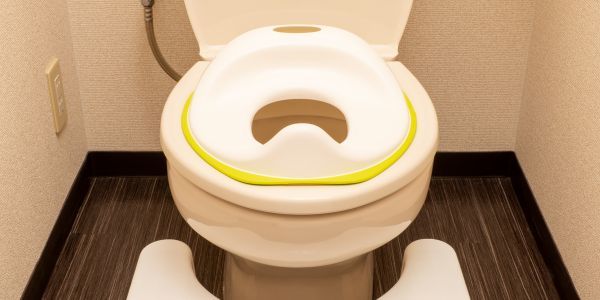

I’m Katie, and I have Ehlers Danlos Syndrome. Our symbol is the Zebra, hence the feature image!
My diagnosis is type 3, HEDS (Hypermobile Ehlers Danlos Syndrome) but I am awaiting genetic testing as I may have a more complex type.
I am also a mummy.
Many people simply don’t understand ‘invisible’ conditions, or are too quick to brush us off as being hypochondriacs, even with this serious condition. Unfortunately, there are people out there who also think that having conditions like Ehlers Danlos Syndrome means that we shouldn’t be parents, or we aren’t as good parents as non-EDS people due to our limitations.
Often, because EDS is generally an ‘invisible illness’, we get told we look fine so must be ‘fine’ – it’s SO aggravating.
I’m not writing this to garner sympathy, to scaremonger, to do anything other than to raise awareness and increase understanding of this often misunderstood condition. I just want people to meet strangers with Ehlers Danlos Syndrome and be like ‘oh yeah, I know what that is’ rather than ‘Elly-Derpy whaaaaaat?!’.
I hope this is eye opening and enlightening!
What is Ehlers Danlos Syndrome?
Good question. Where do I start? How do I describe it in a way that isn’t bloomin’ confusing?
The NHS website summarises it as;
“Ehlers-Danlos syndromes (EDS) are a group of rare inherited conditions that affect connective tissue.
Connective tissues provide support in skin, tendons, ligaments, blood vessels, internal organs and bones.”
In laments terms, my collagen gene is faulty, so my collagen (which is like ‘cement’ holding connective tissue together) is too weak and stretchy. It can cause multi systemic symptoms from head to toe, hence why it is poorly understood by many. There are also many types.
The main symptom is hypermobility (often incorrectly referred to as being ‘double jointed’), but hypermobility alone is not indicative of Ehlers Danlos Syndrome – you have to present with other symptoms on the Brighton and Beighton Scores to have the syndrome (as well as clinical examination and genetic testing) so please don’t self-diagnose or worry if you are a Bendy Wendy like me, without the other issues. The NHS site and EDS UK site both have informative symptom lists here, I’d be typing forever if I were to list each and every linked symptom as there can be so many.
It is classified as a rare condition, affecting around 1 in 5000, but the most common type (HEDS) is now thought to be underdiagnosed and often misdiagnosed as fibromyalgia, Chronic Fatigue Syndrome and other conditions.
Common symptoms;
- Dizziness and fainting – a sign of a comorbidity called POTS.
- Joint pain and weakness
- Hypermobility (often causes clumsiness)
- Common dislocation and subluxation
- Stretchy, doughy skin (no longer a major criteria for diagnosis, just in case you read a pre-2017 source!)
- Poor healing
- Cigarette scarring
- Scoliosis/kyphosis
- Gastroparesis, IBS, amongst other digestive issues
- Chiari Malformation
- MCAD (Mast Cell Activation Disorder) which often shows as hives and allergies
- High arched palate, and very overcrowded mouth, often with baby teeth stuck until teens or older
Plus loads more…
It isn’t ‘one size fits all’, we are all affected to different degrees and there are many more symptoms. Izzy from Coronation Street has a form of Ehlers Danlos Syndrome, and is wheelchair bound. I’m able to walk reasonable distances despite my own limitations. Some of us are disabled, others aren’t – this definitely helps me to get some perspective on bad days, as there is always someone feeling worse than me.
What are the risks during pregnancy?
Ehlers Danlos Syndrome can cause high risk pregnancies – as far as I was told, most UK consultants will treat you as high risk with Ehlers Danlos due to the increased risks. This doesn’t mean you’ll be pressured into a caesarean; in fact, a natural labour is often seen as safer, but whether you’re offered a section will depend on your individual symptoms of Ehlers Danlos Syndrome.
Pregnancy causes an increase in a hormone known as ‘relaxin‘, which makes your connective tissue softer and more pliable to make room for your baby. So, imagine your connective tissue already being TOO soft and pliable – and then it’s flooded with relaxin and other hormones! BOOM. Ouch. Of course, a handful of EDS mummies say their symptoms improve, but more often than not, a large number of EDS mummies report;
- PGP & SPD earlier on
- More joint pain and more subluxations/dislocations
- Premature and/or rapid labour
- More risk of bleeding and tearing
- Resistance to anaesthesia (because weirdly we metabolise medication faster than we should!)
- Poor healing and scarring
- Possible heart issues
Pregnancy was pretty rough on my poor bendy joints and pelvis, I’ll be frank, but I coped by starting my maternity leave at 29 weeks and was prescribed cocodamol for most of my pregnancy, slowly weaning myself off during the third trimester to avoid dependency.
Pregnant/TTC with Ehlers Danlos Syndrome and scared witless? Don’t be. With proper monitoring and management, these risks can be dealt with diligently! I had a postpartum haemorrhage during my emergency caesarean, and healed very slowly, both due to my EDS, BUT I was well cared for and had a fantastic outcome.
More information on pregnancy with Ehlers Danlos syndrome can be found here at The Royal College of Midwives, and at Ehlers Danlos Org. Your care plan may vary depending on your type and your specific symptoms; obviously someone with significant cardiac involvement or other complex complications will be higher risk.
How can it make parenting more difficult?
Each EDS mum will have a different answer to this – the most common issues would likely be falling/issues carrying our kids due to muscle and connective tissue laxity, and propensity to subluxate or even dislocate very easily!
As with all things, YOU FIND A WAY. I struggled to cradle Max as my shoulders come out so easily, so we compromised with strategically placed pillows. I carried Max downstairs on my bum mostly, to avoid rolling my ankle with him in my arms. The list goes on – every issue has had a solution. I’m not saying it’s the same for all zebra mummies, but it doesn’t mean we aren’t capable. Adapt, adapt, adapt.
Yeah, I am more tired than if I didn’t have EDS, because it takes SO MUCH ENERGY keeping myself upright and not tripping over, and keeping my joints in place, so I’ve adapted my day to maximise sleep and rest. My house is a little skewiff at times, but it’s clean and safe, that is what matters, right? Hey-ho.
No matter how badly affected a parent is by Ehlers Danlos Syndrome, there will always be a way to bond, play and interact with their babies, and find enjoyment in parenting.
I’m pregnant with Ehlers Danlos Syndrome – What Should I Tell My Hospital?
Show them your diagnostic letter. If you don’t have it to hand, give them the number for whoever diagnosed you and make it clear that there needs to be communication and a management plan in place. If you’re struggling to get your midwife or consultant to take it seriously, file a complaint with PALS and contact EDS Support UK on their helpline by dialling 0800 907 8518 09:00 – 17:00 on Tuesdays and Fridays.
It’s also worth making sure that your diagnosis is recorded in your little one’s records or red Health Visit book (if you’re UK) as it is genetic and can be inherited. Keep an eye on them for similar symptoms to your own.
To Conclude…
Ehlers Danlos Syndrome isn’t particularly fun, but it is very real and even if someone with EDS ‘looks’ fine, this doesn’t invalidate their condition. It does need taking seriously when you’re pregnant and giving birth, because it isn’t just ‘being a bit bendy’. It can mean that adaptations need to be made to your day-to-day living, but where there is a will, there is a way.
If you hear the term ‘Ehlers Danlos’ or any other odd sounding condition, take the time to listen and learn, and don’t make assumptions.
Love from Katie. Xx


.png)






.jpg)
